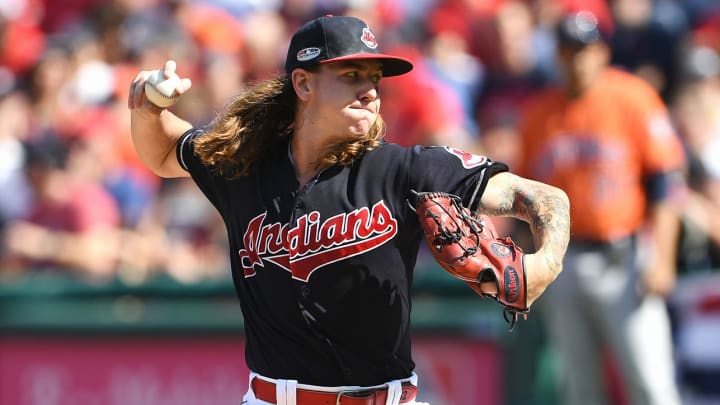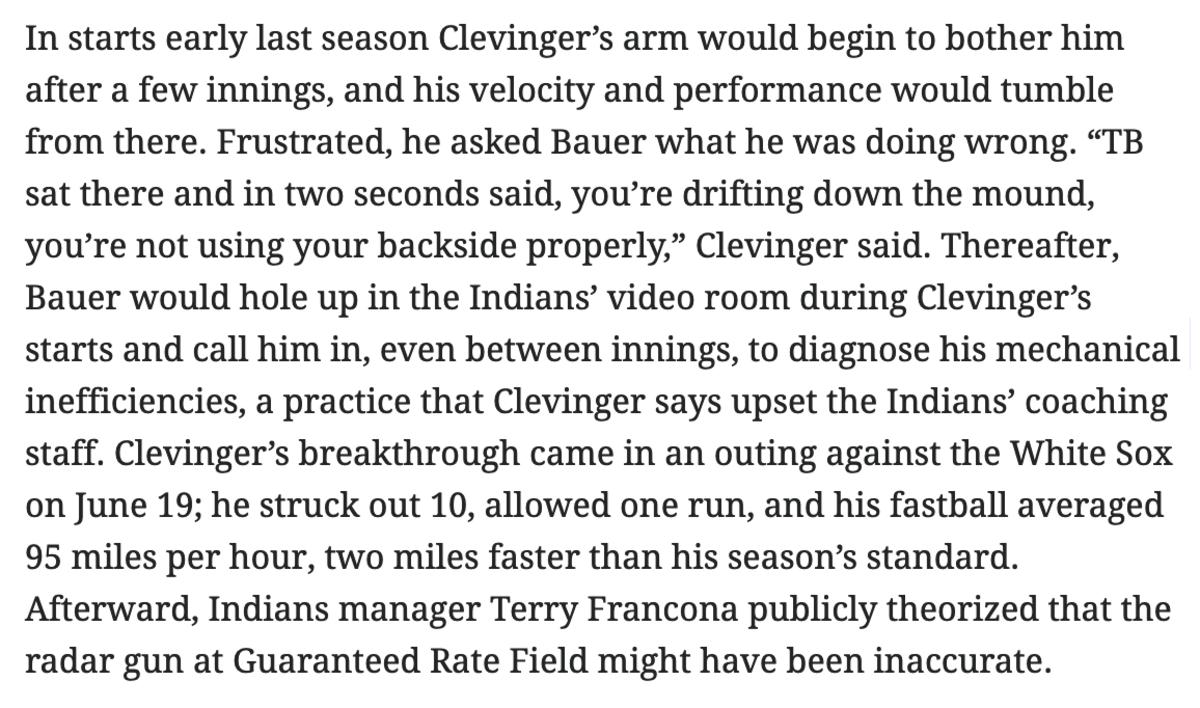Thanks to "Bullpenning," Starting Pitcher Depth is Increasingly Shallow in Fantasy Baseball

There will be more starting pitchers drafted in your fantasy baseball league than any other position. For that reason, it is the closest thing to a showpiece position in the fantasy game. The top of the position, long maligned as overpriced compared with its equals in the batter's box, has surged in recent years. That's thanks in large part to the trends in bullpen usage that have completely changed the deployment of a typical MLB pitching staff. Part of the beauty of a fantasy game based on reality is that we, too, have to adjust with what’s happening on the field, or risk being left behind in our own standings.
Starting pitcher is also a showpiece position because it gives fantasy owners more opportunities than any other to uncover hidden gems and values. We’ll help you adjust to the shifting ground beneath your feet and find some of those prime values in our starting pitcher primer.
Three Burning Questions
1. In the age of bullpenning, does your fantasy team need a true ace more than ever?
The rise of the relief specialist over the last few seasons has been well documented. It reached a (likely temporary) peak last year, with relievers making 16,334 appearances and throwing 17,428 1/3 innings, both MLB records by comfortable margins. The last time relievers threw fewer innings than they did the previous season was 2014. The last time they made fewer appearances than the prior year was 2011. Bullpenning is here to stay.
Despite that reality, the trend is not displacing aces. Rather, it’s picking at the fringes of starting rotations. The back-of-rotation innings eater may be endangered, but there’s no replacement for 200-plus innings of aces like Max Scherzer or Jacob deGrom. However, when fantasy owners could count on 70 or more pitchers throwing at least 180 innings, they could prioritize hitting early and attack the pitching categories with volume. It was possible to build a strong fantasy rotation that didn’t have an ace, but was stocked with starters ranked between 20th and 50th on draft day. That is no longer the case.
In 2014, 34 starters threw at least 200 innings, and 76 tossed 180 or more. Those numbers fell to 27 and 53, respectively, in 2015. Last year, just 13 pitchers reached 200 innings, while 32 threw 180, two fewer than notched 200 just four seasons earlier. It’s still possible to win with volume at this position, but it adds a degree of difficulty because the volume isn’t what it once was. If you’re going to build a strong rotation without an ace, you’re going to have a success rate on SP2s through SP5s of about 90%, and while we all want to pretend we’re scouts, that is much easier said than done.
There’s still as much front-of-rotation talent in the league as ever, but as a class, those pitchers are asked to do less and less with each passing season. The same is true of the good-to-great pitchers who aren’t quite aces. That means the ones who are near-locks to post sterling rates while racking up gaudy strikeout numbers, pitchers like Scherzer, deGrom and Chris Sale, are more valuable than ever. Get one of them, and you’ve got an anchor for your rotation. Miss out on all of them, and you’ll be trying to build a staff from the pool of SP2s and SP3s that has been diluted by bullpenning.
2. Who’s ready to make the jump to elite this season?
At least one pitcher makes this leap every year. In 2018, it was Aaron Nola. You could say a few others did, too, but the ones I have in mind came more from the “promising” camp than “good/great,” so we’ll save them for our final burning question in this primer. There are two strong candidates to be this year’s Nola who immediately came to mind when I thought of this question. With all due respect to Jameson Taillon, who has the ceiling to be a top-10 pitcher this year, the nod to be this year’s Nola goes to Mike Clevinger.
Clevinger has already compiled strong campaigns in both of his full MLB seasons. In 2017, he pitched to a 3.11 ERA and 1.25 ERA with 137 strikeouts in 121 2/3 innings. He found an entirely new level last year, posting a 3.02 ERA, 1.16 WHIP and 207 strikeouts in 200 innings. Add those two seasons up, and you get a 3.05 ERA, 1.19 WHIP and 344 strikeouts in 321 2/3 innings over the last two years.
Clevinger is being drafted as a top-20 pitcher and he doesn’t need to add anything to what he did last year to pay off at that price. But there’s reason to believe that he will add something that will make him one of this season’s biggest bargains, even though it’s not like he’s on the clearance rack. Consider the following excerpt from Ben Reiter’s excellent story on Trevor Bauer.

Going into that June 19 start, Clevinger had been solid, but inconsistent. He had a 3.15 ERA, 1.29 WHIP and 80 strikeouts against 30 walks in 91 1/3 innings, making eight quality starts in 15 outings. From that point through the end of the season, he amassed a 2.90 ERA, 1.13 WHIP and 127 strikeouts against 37 walks in 108 2/3 innings, and notched quality starts in 13 of his 18 trips to the mound. Clevinger’s strikeout rate before June 19 was 21.9%. Beginning June 19, it was 28.6% through the rest of the year.
Say what you will about Bauer, but he definitely knows how to make adjustments and suck every last ounce of production out of a pitcher. It seems he helped Clevinger do that in the second half of last season. With that version of Clevinger in effect for the entire 2019 season, the Indians may have four legitimate aces, and fantasy owners may find themselves a top-10 pitcher in the middle of the fifth round.
3. Who’s ready to fulfill their potential this season?
This, too, is a jump that happens every year, with even more frequency than going from very good to excellent. That’s because there are more promising pitchers than established ones, and because it’s easier to become good-to-great than it is to leap all the way to elite.
Some pitchers who graduated from promising last year included Blake Snell, Trevor Bauer, Mike Foltynewicz, Walker Buehler, Patrick Corbin and even Clevinger himself. One who will do so this season, among many candidates, is Nick Pivetta.
Try as I might to be unique, I’m going to have plenty of company on this particular bandwagon. Pivetta is a darling of the sabermetrics community, which is the same as saying he’s beloved by the fantasy community. Pivetta’s cosmetic numbers weren’t pretty last year—he had a 4.77 ERA and 1.30 WHIP in 164 innings—but everything in his advanced profile suggests a breakout is on the horizon.
What’s the surest way for a pitcher to dominate an offense? Miss bats. Pivetta had a 27.1% strikeout rate and 12% whiff rate in 2018, ranking 13th in the former and tied for 16th in the latter. He finished with a spread of 19.7 percentage points between his strikeout and walk rates, which ranked 14th in the league. The pitchers ahead of him? Chris Sale, Justin Verlander, Max Scherzer, Jacob deGrom, Gerrit Cole, Patrick Corbin, Carlos Carrasco, Trevor Bauer, Blake Snell, Corey Kluber, Luis Severino, Germán Márquez and teammate Aaron Nola. Carrasco and Marquez were the only two of those 13 who didn’t make the All-Star Game. Eleven of the 13 got at least one Cy Young vote, including the top-six vote getters in the AL and top four in the NL. Turns out striking out a lot of batters and walking few is a reliable formula for success.
Pivetta’s problems occurred when hitters actually did make contact. He allowed 24 homers in his 164 innings, tied for 24th-most in the league. Among pitchers who allowed at least 20 homers, only Ivan Nova threw fewer innings. His 1.32 HR/9 was MLB’s 15th-highest, while his 15.8% HR/FB ratio was worse than all but five starters. All those homers served to undermine what could have been an excellent season.
If Pivetta is going to fulfill his potential, he must be better at keeping the ball in the ballpark. Luckily, his elite ability to miss bats isn’t the only factor he has working in his favor to reduce his home-run rates. Pivetta’s 46.7% ground-ball rate ranked 15th in the league last year. He was one of six pitchers in the top 15 in both strikeout and ground-ball rates, joining Nola, Corbin, Carrasco, Marquez and Charlie Morton. All of this strongly suggests that Pivetta can ward off the long ball this season. If he does, he’ll be, at worst, at top-30 pitcher.
2019 Fantasy Baseball Rankings powered by FantasyProsECR ™ - Expert Consensus Rankings
ADP - Average Draft Position
